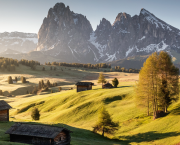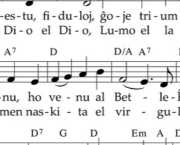
Revolution in written space
 6 min
6 min
Revolution in written space
You are probably familiar with this typical 1950s-60s movie scene: a beautiful, smiling American housewife waves at her husband as he pulls up in a squeaky clean car after a hard day’s work. In this scene, male space is clearly public, while female space is domestic.
American culture and cinema aside, the place for women has traditionally been domestic, for evolutionary purposes, among others: private spaces provided safety during and after childbirth, while men went out to gather food and protect the dwelling from attacks. The gendering of public space is in fact the outcome of a number of cultural, socio-economic and religious factors. For centuries, exploring—even going on a simple walk—was a male privilege. Take the crusades or the discovery of new continents, or also the aristocratic young men who roamed Europe in the spirit of the Grand Tour from the 17th to the 19th centuries.
Physically separating men from women has contributed to perpetuating gender inequality by restricting women's access to socially recognized forms of knowledge. Though the Suffragettes marked the beginning of women's symbolic claim to space, public spaces continue to present challenges to this day. As the philosopher Judith Butler points out, walking home alone at night, hitchhiking, or ambling down a secluded street entails a level of risk that makes it dangerous for women to be independently mobile, thus reasserting the importance of the male chaperone to this day.
The impact of all this can be seen in literature. Jane Austen's heroines spend their time in mansions and estates, and when they do venture into the city, they shun urban spaces and favor 'safer' zones, like the dress shop. Consider how Austen and other women writers of her time would not have had access to the world of men, while men were familiar with domestic spaces. Despite this, stories written by women are often dismissed as unserious, 'women's fiction', pure entertainment, while worthy literary genres have been established around the use of public space: in epics, picaresques and adventure novels, male protagonists plunge head-first into the world, and to bring back insight into humanity based on their own experience. But the importance and complexity of their female counterparts who move in private spaces is rarely examined.
The gendered use of space seems self-evident. Whether in Dostoevsky, Vonnegut, Houllebecq or Dezső Kosztolányi's Kornél Esti, male characters move easily through public space. Meanwhile Marilynne Robinson's Housekeeping, as the title suggests, focuses on the home and its immediate surroundings. In Daisy Johnson's Sisters, the horrors of domesticity bring to light a family tragedy. Even Magda Szabó, doesn’t venture far from Katalin Street: the home and its immediate surroundings provide safety, despite historical trauma and the terrors of Hungarian fascism.
Breaking out of the domestic is only possible in extreme cases, even in the works penned by male authors. Anna Karenina chooses her beloved over her household; Kunigunda is dishonored, her home wrecked by Bulgarians; Nana must sell her body to make a living. Women writers have a similar take on public space, often instilling it with concrete instances of traumas, related in the first person. The fascist regime’s demands on women partisans features prominently in Renata Viganò's work. In Alaine Polcz's novel One Woman in the War, the narrator is raped by Russians after being forced to flee her home. And the protagonist in Zsuzsa Rakovszky's novel The Snake’s Shadow loses her virginity in a dusty, desolate hut in the woods far from home, wracked with ambivalence. These examples can be interpreted as a narrative strategy deployed by women writers, using geography as a secret or coded language to convey emotional or symbolic meaning (a so-called “geo parler femme”). They may resort to such codes because they feel they cannot express their emotions and experiences in any other way.
Closely linked to the physical city is the symbolic, imaginary one: memories, life events and historical moments are often lived and understood through the fabric of public space. Historical memory is built on these spaces, from which the domestic and the female is excluded. Notice how our literature is brimming with battle fields, close combat scenes and political intrigues, but we have far fewer stories of women taking on the role of bread-winner during the war, or being attacked and sexually abused by soldiers in their own homes. And hardly any of these were penned by women writers.
This is why it can be particularly useful, as a woman writer, to use domestic space as a conscious, narrative-shaping force. Rather than depict the home as an unexamined feminine space, to reflect on its problematic nature and dramatize women's traumas through it, as men do through the urban environment. Beyond that, it can be interesting too to send women characters out of the home and, like suffragettes, have them symbolically occupy literary public space. In this respect at least, I believe, the women’s revolution is yet to come.
Translated by Anna Polonyi









 English
English
 Français
Français
 Deutsch
Deutsch
 Italiano
Italiano
 Español
Español



 Contribute
Contribute












 You can support your favorite writers
You can support your favorite writers





